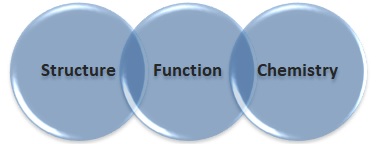What Happens In The ADHD Brain Of A Child?
13th March 2021

We all know that our mind is a busy communication network but do you know the fact that certain differences in a brain make it much harder for people with ADHD? Attention-deficit hyperactivity disorder or ADHD is a cognitive condition generally characterized by special needs. This condition affects and also controls the affected child’s attention duration. Therefore, it is necessary for teachers to know how to help a child with ADHD in school.
In ADHD, the synapse plays a crucial role and there is a gap between neurons, which is known as a neurotransmitter. These synapses are the synthetic couriers of all the messages and the neural connection. So, in an ADHD mind, the vital synapses are dopamine and noradrenaline. The big change here is, in the ADHD cerebrum, there is dysregulation of this dopamine system. Nevertheless, numerous researchers are learning and searching more and more about the brain development and ADHD. Early intervention is essential to help the ADHD child.
What is the brain structure in ADHD?
The brain of a normal child is a lot different than the brain of an ADHD child. However, this doesn’t mean that children with ADHD aren’t smart enough. This condition leads to common special needs like –
- Anxiety
- Mood swings
- Anger-control issues
- Obsessive-compulsive disorder
- Being unable to sit unmoving
- Continuously fidgeting
- Being incapable to focus on tasks
- Extreme physical movement
- Too much talking
- Acting without thinking
- Interrupting conversations
Researchers also reported that people with ADHD have smaller brain volume in five sub-cortical areas, and their entire brain size was smaller, as well. In other words, we can say, parts of an ADHD brain mature at a slower speed, sometimes never reach the development compared to a person who do not have ADHD. Parts of the ADHD brain mature at a slower pace (approximately one to three years) and never reach the maturity of a person who does not have ADHD.
So, what are the differences in an ADHD brain?
The biological difference in an ADHD brain can be divided into three areas: structure, function, and chemistry.

Generally, the ADHD condition comes under a lot of examination and analysis. Well, there are numerous types of brain imaging procedures that let researchers study how the ADHD brain functions. These include:
- Functional magnetic resonance imaging (FMRI)
- Positron emission tomography (PET)
- Single-photon emission computer tomography (SPECT)
For people with ADHD, researchers have found that there are modifications in blood flow to several areas of the brains. Reduced blood flow designates reduced brain movement. Also, ADHD may be connected to dysfunctional brain connectivity, however, people with ADHD may have bigger functional connectivity in some areas of the brain. If we talk about the brain chemistry, we can see that there is dysregulation of the dopamine system in an ADHD brain.
You must be thinking about the diagnosis, right? Unfortunately, brain scans cannot be used to identify ADHD and there is no objective test to detect ADHD too. The identifying processes for ADHD are:
- A detailed examination of school reports with a medical history
- A comprehensive interview with the patient
- Various tests to measure attention, distractibility, and memory
ADHD was the first special need found to be the consequence of a deficiency of a specific neurotransmitter. This leads to impulsive decision-making and actions, and typically a hyperkinetic mode of life. Therefore, early intervention is needed at the school level with teachers pursuing ADHD courses for teachers program.
Written By : Aditi Ghose

